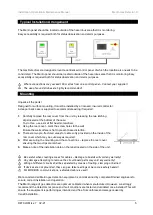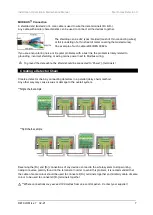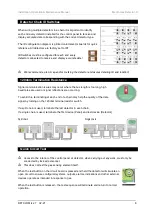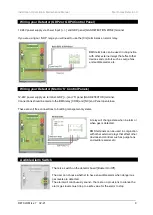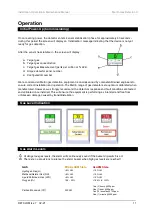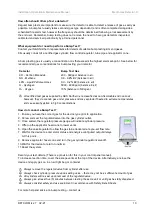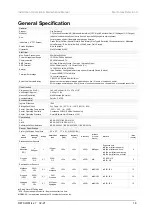
Installation, Operation & Maintenance Manual Merlin Gas Detector-X
DETX-IOM Iss: 7 02-21
17
Gas Sensor Types & Reaction Times
The time for gas sensors to react to their target gas will vary dependant on the type of gas detector/gas
sensing element. You should always refer to the appropriate specification for information including sensor
type and alarm levels i.e. electro-mechanical sensors (such as Carbon Monoxide) will react to its target
gas slower than semi-conducting sensor types (such as methane, LPG and Hydrogen).
Gas sensor locations.
End of Life (EOL)
The expected lifecycle is approximate from the first operation and power is continuously supplied.
The expected lifecycle will depend on the type of gas your detector is targeting and may vary
depending on application/environmental conditions such as the frequency of exposure to the target
gas, poisons or inhibitors.
At the end of their working life, electrochemical sensors for oxygen and carbon monoxide detectors
should be disposed of in an environmentally safe manner.
Alternatively all detectors can be securely packaged and returned to S&S Northern clearly marked
for disposal.
Electrochemical sensors should not be incinerated as this may cause the cell to emit toxic fumes.
The expected lifecycle is approximate from the first operation and power is continuously supplied.
The expected lifecycle will depend on the type of gas your detector is targeting and may vary
depending on application/environmental conditions such as the frequency of exposure to the target
gas, poisons or inhibitors.
The typical life of a gas detector is as follows subject to appropriate testing, service and calibration on an
annual basis, or according to site practice.
This message indicates that the detector has reached its expected operational lifecycle.
No gas levels will be displayed.



